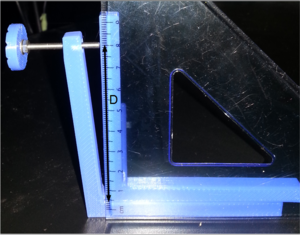G-Code Handbook: The Ultimate Beginner's Guide for 3D Printing and CNC
Are you new to 3D printing or CNC machining and feeling overwhelmed by G-code? This guide simplifies everything! We'll cover the essentials, from understanding the basic structure of G-code to the most common commands you'll use to control your RepRap printer or CNC mill. Let's dive in and transform you from a G-code novice into a confident maker.
What is G-Code? Your Machine's Language Explained
G-code is the language your 3D printer or CNC machine understands. Think of it as a set of instructions that tells your machine exactly what to do: where to move, how fast to move, and when to turn things on or off.
- It's the bridge between your design software and physical creation.
- Understanding G-code allows for better control over your prints and projects.
- It is based on the NIST RS274NGC G-code standard.
Preparing G-Code: Slicers vs. Manual Coding
There are several ways to get G-code for your projects:
- Slicers: Programs like Slic3r, Skeinforge, and Cura take your 3D model and automatically generate G-code. They're user-friendly but offer less control.
- Libraries: Libraries like mecode let you program toolpaths for complex prints, offering precise control.
- Manual Coding: Writing G-code yourself is ideal for testing and calibration, giving you ultimate command over every move.
G-Code Structure: Decoding the Commands
Each line of G-code is a command. Let's break down the key components:
- G-commands: These control movement (e.g., G0 for rapid move, G1 for controlled move).
- M-commands: These handle machine functions (e.g., turning heaters on/off, controlling fans).
- Parameters: These specify values (e.g., X, Y, Z coordinates, feed rate).
Essential G-Commands for 3D Printing and CNC
Here's a look at some of the most frequently used G-commands:
- G0 & G1: Move. These commands dictate how the print head moves. G0 is for rapid, non-printing movements, while G1 is for controlled movements during printing with specified feed rates.
- G2 & G3: Controlled Arc Move. These create arcs and circles. Parameters like I, J, and K define the arc's center.
- G4: Dwell. This command pauses the printer for a specified time. It's useful for letting layers cool or allowing materials to settle.
- G28: Move to Origin (Home). This sends the print head to the machine's origin point. It's typically used at the start and end of prints.
- G29: Detailed Z-Probe. The bed leveling process involves measuring multiple points on the print bed to compensate for variations in height.
- G90: Set to Absolute Positioning. This sets the positioning mode to absolute, where coordinates are relative to the origin.
- G91: Set to Relative Positioning. This sets the positioning mode to relative, where coordinates are relative to the current position.
- G92: Set Position. This redefines the current position without moving the machine. It's useful for calibrating or adjusting coordinates.

Must-Know M-Commands for 3D Printing and CNC
Master these M-commands to control your machine's functions:
- M0 & M1: Stop. These pause the print. M0 stops unconditionally, while M1 can be conditional.
- M3, M4 & M5: Spindle Control. (CNC-specific) These turn the spindle on clockwise (M3), counter-clockwise (M4), or off (M5).
- M6: Tool change Used for tool changes for CNC machines.
- M7, M8 & M9: Coolant Control. (CNC-specific) These turn mist coolant on (M7), flood coolant on (M8), or coolant off (M9).
- M17: Enable/Power all stepper motors. This engages all stepper motors, holding the machine in position.
- M18: Disable all stepper motors. This disengages all stepper motors, allowing free movement.
- M104: Set Extruder Temperature. This command sets the target temperature for the 3D printer's extruder.
- M106: Fan On. Turns on the cooling fan.
- M107: Fan Off. Turns off the cooling fan.
- M109: Set Extruder Temperature and Wait. Similar to M104 but waits until the temperature is reached before proceeding.
- M140: Set Bed Temperature. Sets the target temperature for the 3D printer's heated bed.
- M190: Set Bed Temperature and Wait. Similar to M140 but waits until the temperature is reached before proceeding.
Optimizing Your G-Code: Tips and Best Practices
- Comments: Use comments (
;or()) to explain your code. This makes it easier to understand and modify later. - Line Numbers: Use line numbers (
N) for easier debugging and referencing specific commands. - Checksums: Implement checksums (
*) to verify the integrity of your G-code during transmission. - Firmware Flavors: Be aware that different firmware versions might interpret G-code slightly differently. Always consult your firmware's documentation.
Understanding Fields, Case Sensitivity, and Special Characters
- Fields: G-code lines are composed of fields, which are commands and their associated parameters.
- Case Sensitivity: G-code is generally not case-sensitive, but it's good practice to use consistent capitalization for readability.
- Special Fields:
Nis for line numbers,*is for checksums, ensuring data integrity.
Troubleshooting Common G-Code Errors
- Incorrect Coordinates: Double-check your X, Y, and Z values to ensure they're within the machine's limits.
- Missing or Incorrect Parameters: Ensure all commands have the required parameters and that they're in the correct format.
- Conflicting Commands: Avoid using conflicting commands on the same line.
- Temperature Issues: Verify that your temperature settings are appropriate for the material you're using.
Elevate Your 3D Printing & CNC Skills with G-Code Knowledge
Understanding G-code is more than just knowing commands; it's about gaining control over your manufacturing process. Whether you're a hobbyist or a professional, mastering G-code opens up new possibilities for creating complex and precise parts. So, experiment, explore, and never stop learning!





